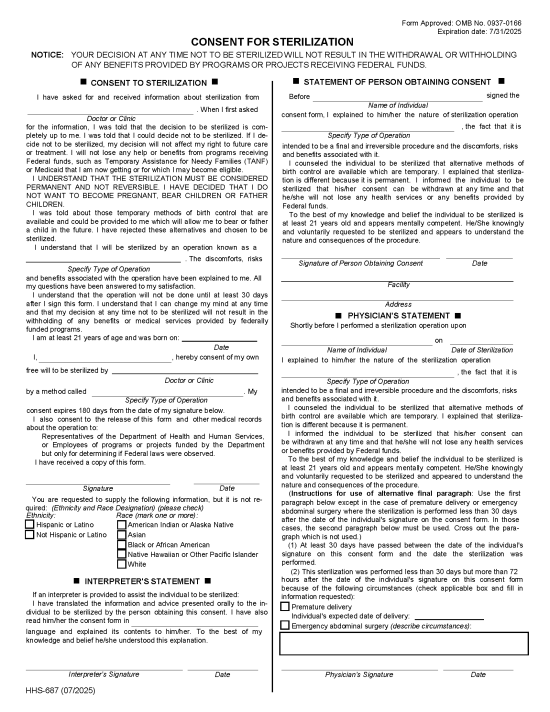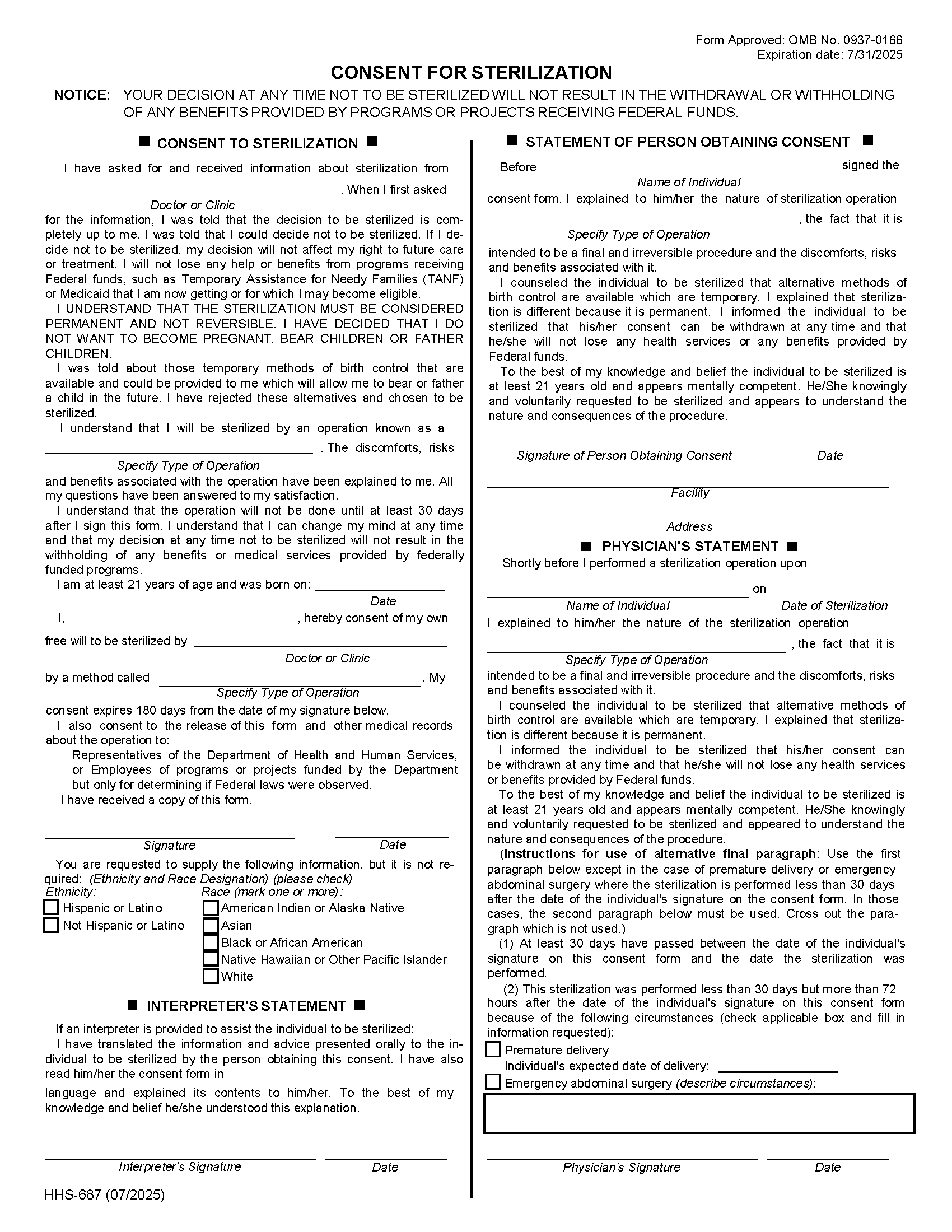The sterilization consent form, or “consent for sterilization,” is an official document provided by the U.S. Department of Health & Human Services. Some states offer a variant of this form containing additional information. Physicians should check with their state’s health department to see if a state-specific version is available.
Required Signatures
The consent form requires signatures from the following individuals:
- Patient
- Interpreter (if applicable)
- Person obtaining consent
- Physician
In New York City, informed consent must be provided in the presence of a witness, who must also sign the consent form.[1]
Federally Funded Programs: Consent Laws
Physicians must comply with the following federal laws when performing sterilizations covered by Medicaid or another federally funded health service:
- Patient Requirements – Patients must be mentally competent, at least 21 years of age, and provide informed consent under federal procedures.[2]
- Waiting Period – Sterilization must occur at least 30 days but no more than 180 days after the date of consent.[3] However, the procedure can be performed as soon as 72 hours after the date of consent in the case of:
- Emergency abdominal surgery.
- Premature birth, so long as consent is received at least 30 days before the expected delivery date.
The abovementioned federal requirements do not apply if the patient pays for the sterilization out-of-pocket or through their private health insurance provider.

